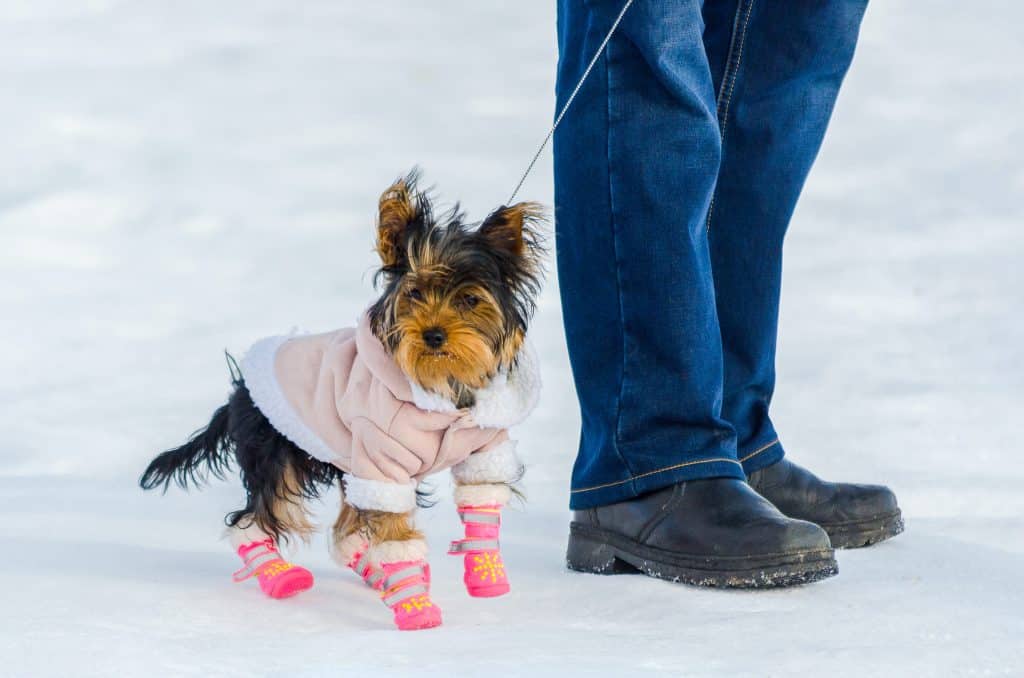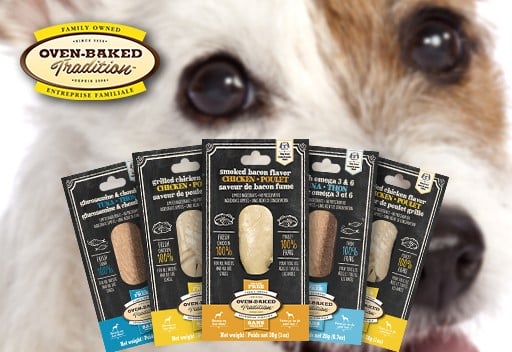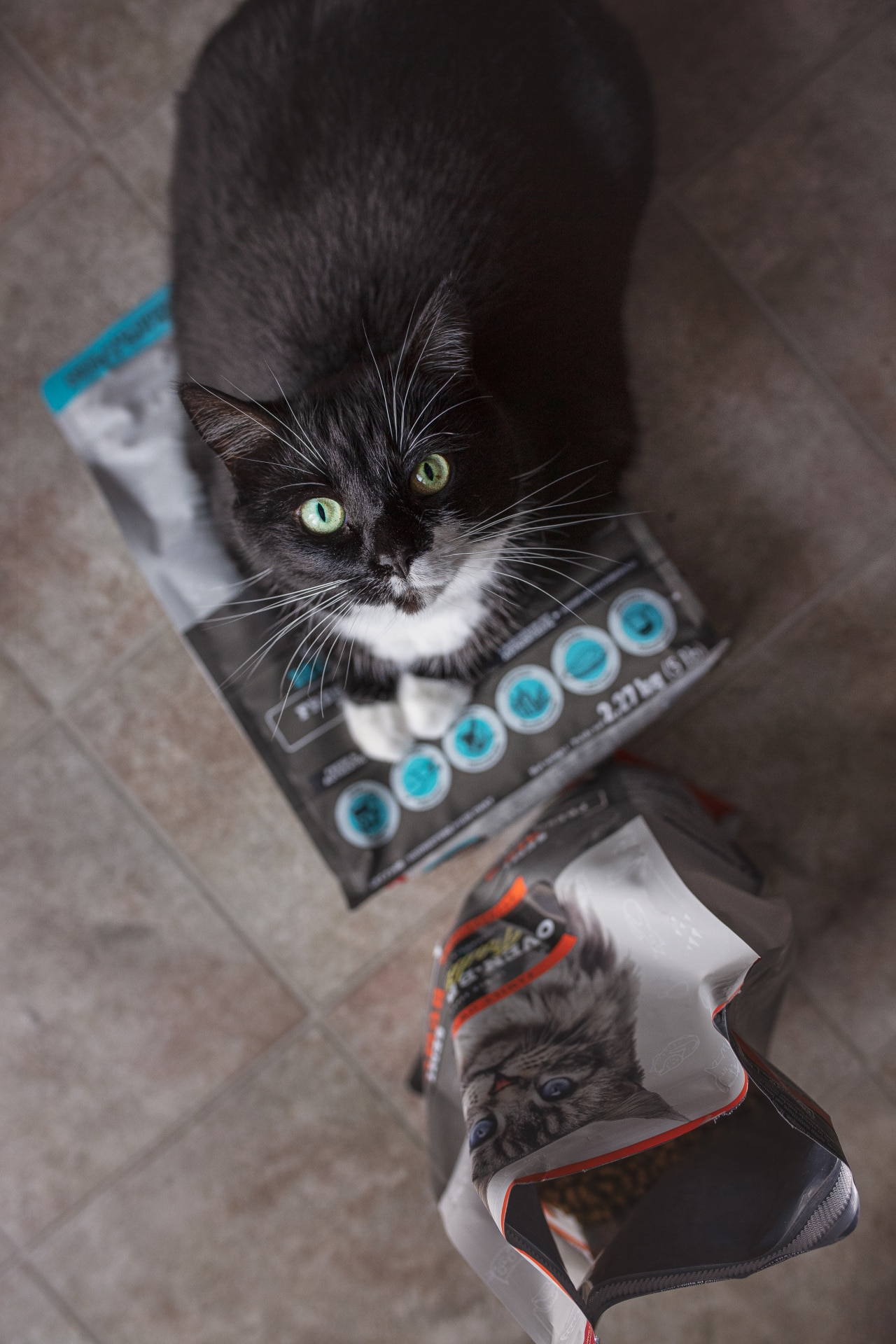Our winters are rough on our dog’s delicate paws. Cold weather and frozen surfaces can cause painful frostbites on their paw pads. Snow and ice can also cut their delicate paw skin, giving them these small but painful injuries that turn every step into a painful one. Add the salt and toxic chemicals that we pour on our sidewalks and streets, and your dogs also risks chemical burns and even intoxication.
Here are pieces of advice to make each walk more comfortable for your dog:
1) When possible, avoid walking it on sidewalks and streets that have been heavily treated with salt and chemicals. You usually can have it walk by your side on the snow instead.
2) Before each winter walks, protect your dog’s paws with a protective spray or balm. These work by creating a physical barrier between your dog’s delicate paws and the harsh winter elements. Dermoscent Bio Balm and Paw Pro are popular products. There are also numerous brands on the market: ask your Oven-Baked Tradition retailer about his product selection.
3) After each walk, wash and dry your dog’s paws so that you remove all the salt and toxic products. These cannot only burn your dog, but also cause indigestion if your dog tries to lick them off to relieve itself.
4) Daily, hydrate your dog’s paw pads so that its skin is strong and healthy, which prevents them from cracking and bleeding. Imagine how painful a paper cut would be if you had to step on it…on a salty surface! Bag Balm is the most affordable and popular product on the market.
Boots are probably the safest option to protect your dog’s paws during wintertime.
How to get your dog used to wearing boots?
If possible, don’t wait until the first snowfall before presenting your dog with its boots. Go gradually: the key to success is not to rush it.
1) Show it a boot. Let it sniff it at will and put it on its paw, but do not tie it up. Praise it enthusiastically, give it a treat and take it off.
2) The next day, do the same thing with another paw or, if all goes well, put on two boots instead of one. Continue to congratulate, pet and reward your dog, who must associate the wearing of its boots with a positive feeling.
3) When your dog agrees to wear all four boots at the same time, you start all over again! But this time, you tie the boot… Reward it and start again with another paw.
4) A few days later, you can start teaching your dog to get around with something hanging around its paws.
As you have understood, patience is key and encouragement along with indulgence should not be overlooked. We have developed a new range of treats that has proven to be effective for this type of learning. We present it here:



